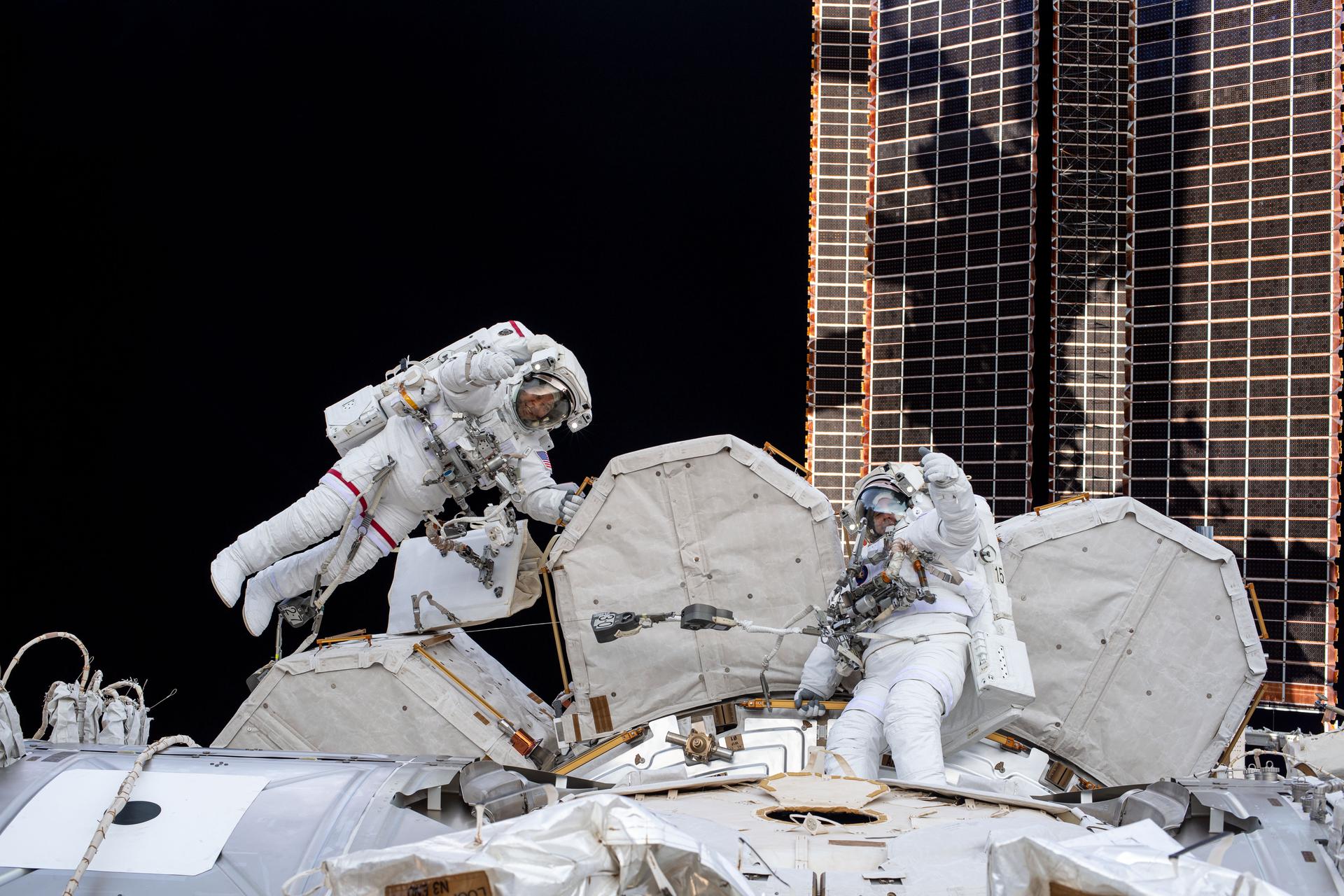
Audience
Educators
Grade Levels
Grades 5-8, Grades 9-12
Subject
Life Science, Physical Science, Living and Working in Space, Chemistry, Matter and Its Properties
Type
Lesson Plans / Activities, STEM Resource Collections, Videos
Next Generation Science Standards: HS-PS1-3
Common Core Math: HSS.ID.B.6, HSS.ID.B.6.C, HSS.ID.C.8
Classroom Connection
Use demonstrations, videos and other resources to take another look at air pressure from the perspective of how mobility is affected in pressurized NASA spacesuits.
The Science Behind the Combo
A spacesuit must provide similar air pressure in the vacuum of space to that we experience on Earth. In a spacesuit, an astronaut’s mobility is affected by pressure. The design of the suit must compensate for the limited mobility. Spacewalks can last up to eight hours. In microgravity, an International Space Station astronaut’s dexterity is important. Imagine working on the Moon or Mars. While each of these bodies has less gravity to overcome than on Earth, astronauts will likely expend much more energy on missions in these unforgiving environments. Protecting astronauts from harsh conditions while they complete complex tasks will become a delicate balance.
Combo Resources:
STEMonstrations: Spacewalk Part 2: Spacesuits
Article and Infographic: Spacewalk Spacesuit Basics
Houston, We Have a Podcast: Episode 16—Spacesuits
Demonstration: Bending Under Pressure
Demonstration: Keeping the Pressure On
AP Chemistry Lesson: Diving Down Deep (TI-Nspire™)
Infographics and Shareables Gallery: #SuitUp
Website: Suit Up
Teacher Tips:
- Mix and match the combo resources to suit your goals, allotted time and available materials.
- Introduce spacesuits with the STEMonstrations video in which an astronaut explains the parts of a spacesuit and their functions or with the “Spacewalk Spacesuit Basics” infographic.
- Assign the podcast as homework.
- Use the AP chemistry lesson if you’d like to include the gas laws with your study of pressure and spacesuits. This lesson requires using Texas Instrument Nspire (TI-Nspire) graphing calculator technology for successful completion.
- Note that astronauts on the space station are using the same spacesuits that space shuttle astronauts used. Current spacewalks require astronauts to use their hands to translate, or move, along handrails from place to place on the station. The spacesuits for the Artemis Generation will allow astronauts to move on the surface on the Moon and Mars. Those spacewalks will require astronauts to use their legs to walk.
- Explain to students that making pressurized spacesuits functional is just one challenge designers must overcome. As discussed in the Spacesuit podcast, supercharged subatomic particles can rip through an astronaut’s DNA. The zero to thin atmospheres of the Moon and Mars will expose astronauts to more radiation than current spacewalks on the space station. New suits will need to address this important issue. To analyze the durability of spacesuit components, five suit samples were sent to Mars aboard Perseverance.

























